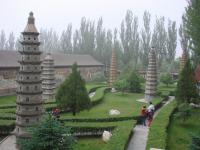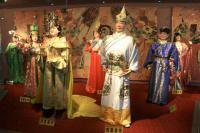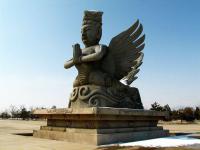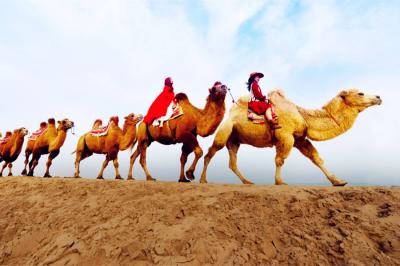Western Xia Imperial Tombs
Located on the eastern slope of Helan Mountains, some 40km westward from capital city of the Western Xia – the present Yinchuan (Xingqing in history), the mausoleum occupies an area of 50 square km including nice tombs of Western Xia Kings and 250-plus companion tombs buried with the remains of the major imperial family members and aristocrats. It is one of the largest and best protected imperial cemeteries in China.
The Western Xia dynasty (also known as Tangut Empire), existed between 1038 and 1227, when it was finally conquered by the Mongols under Genghis Khan. The empire was founded by the Tangut ethnic group, about which little is currently known. The kingdom lasted for 189 years under 10 successive emperors, contributing significantly to the development of China's western regions.
Most of the original ground buildings of the mausoleum were ruined before the Ming Dynasty. However, a great amount of construction materials and broken stone tablets and steles with inscriptions in Western Xia or the Han characters still remains. The tumuli followed the style of imperial tombs in the Northern Song Dynasty, and are nicknamed as "Chinese Pyramid" due to their shapes. Also after years of weathering, the tumuli look more like giant scoops of ice screen melting in the Gobi Desert.
Nowadays a site museum is open to the visitors, offering a glimpse into the culture and history of Western Xian. This site has become a must-see for all tourists to Yinchuan.




